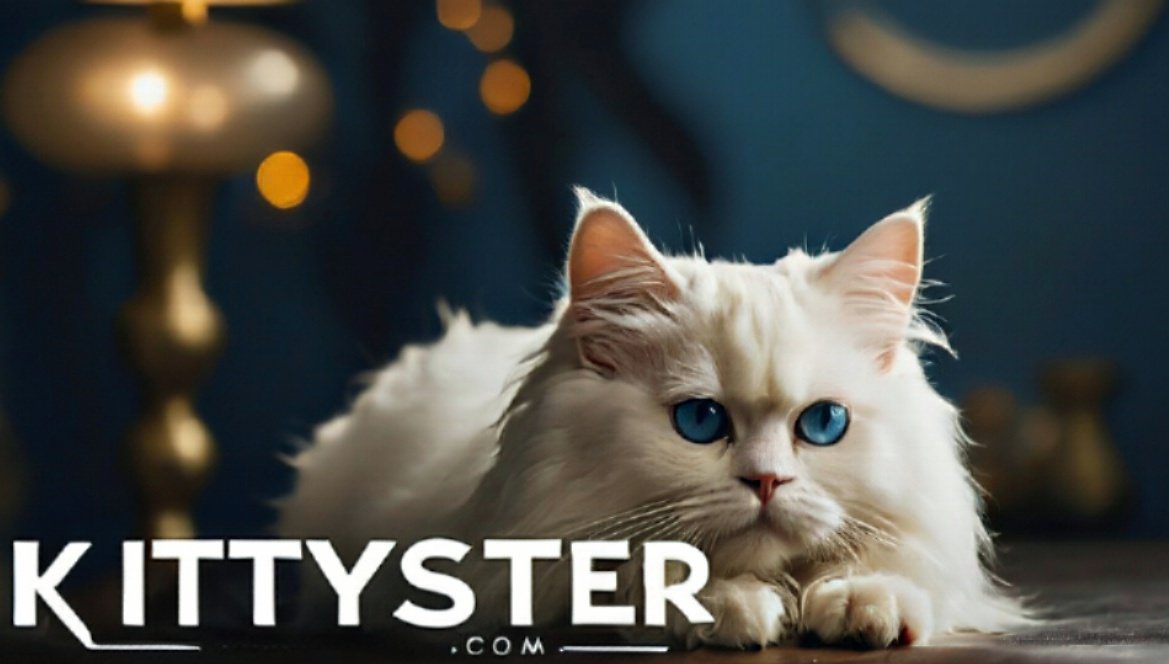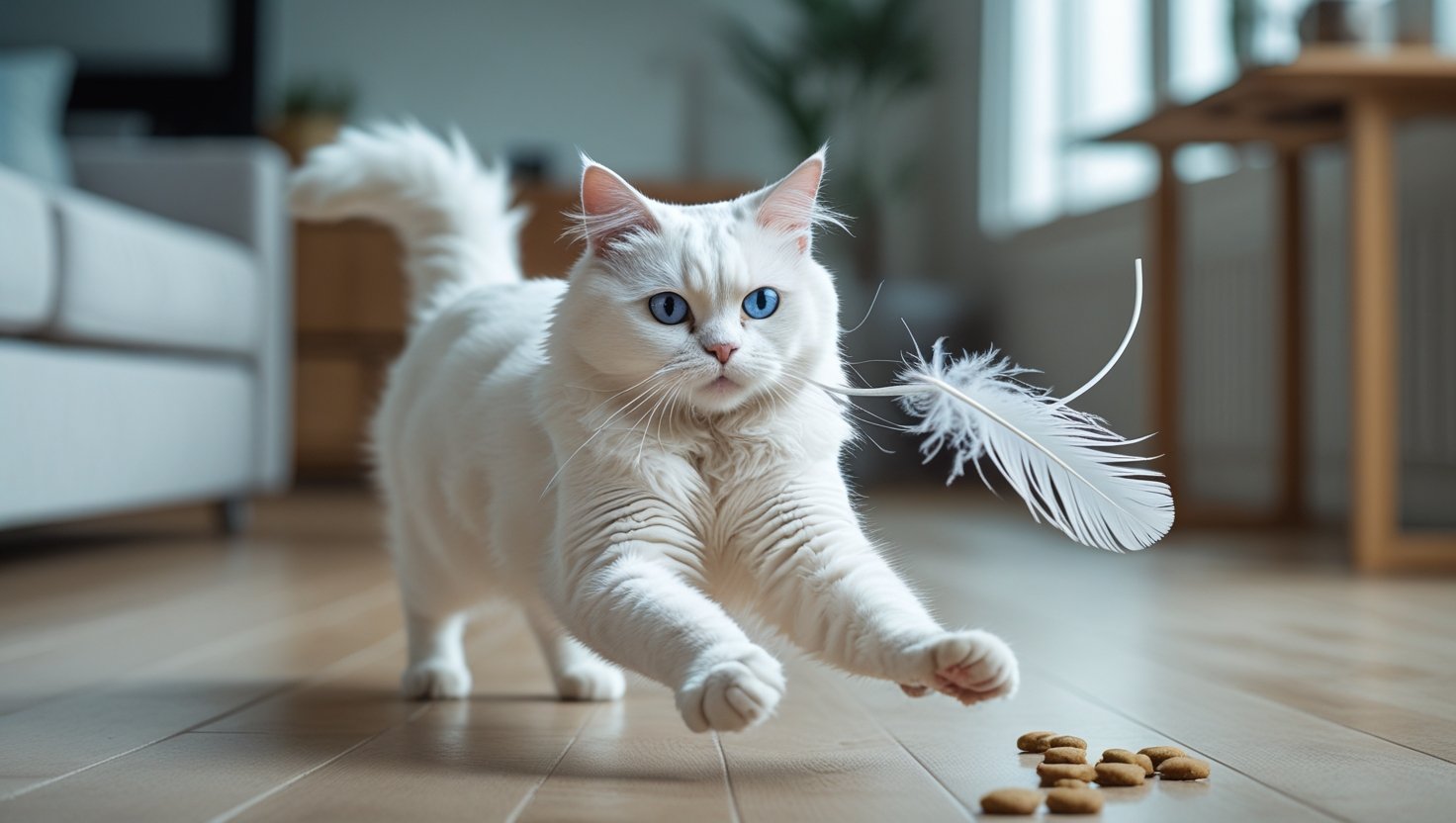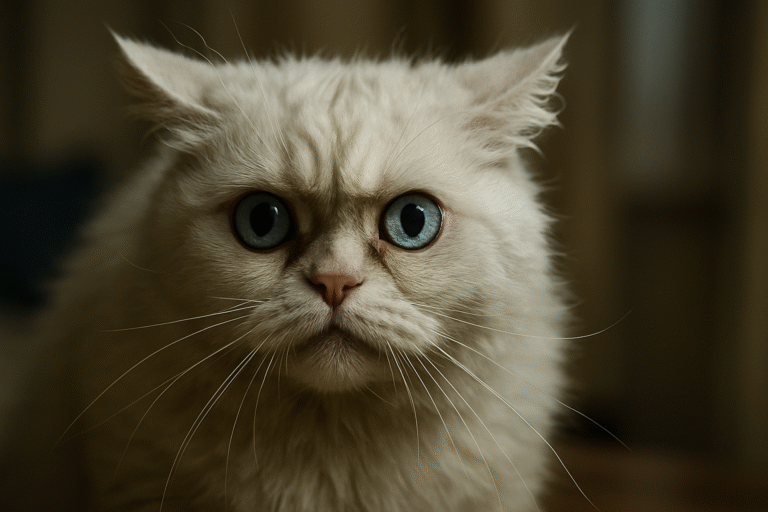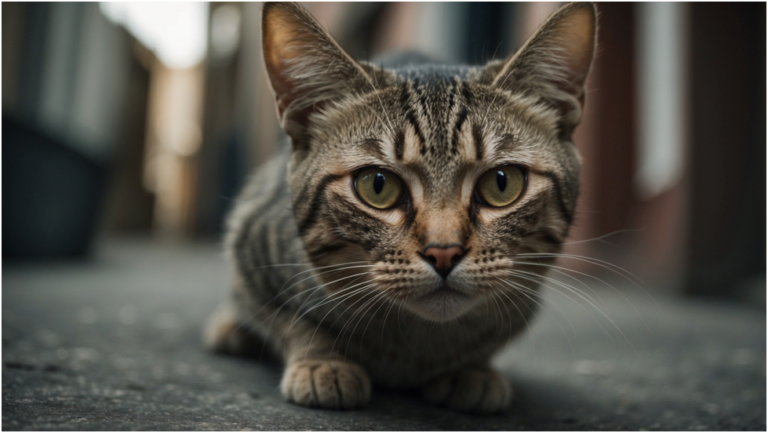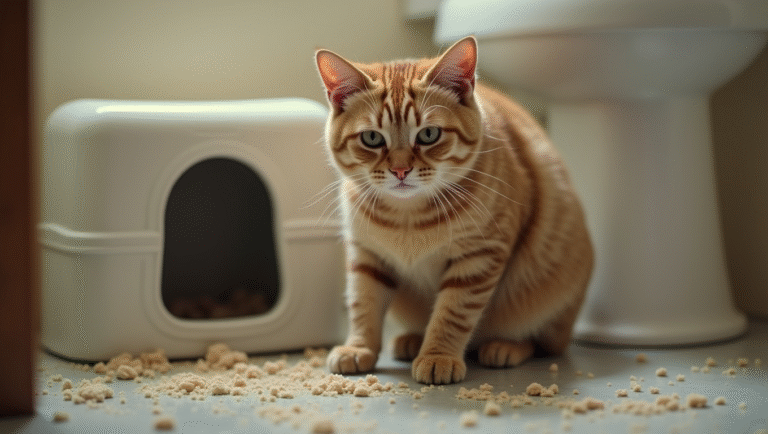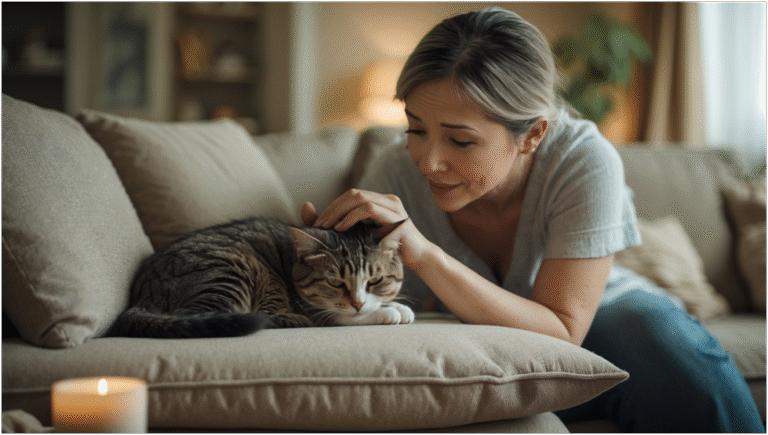How Do Cats Play? Ultimate Guide to Cat Behavior, Advantages of Play & Bonding Strategies
Playtime affects your feline’s physical, mental and emotional health. Play imitates natural hunting: it provides physical exercise and mental challenges while relieving stress and destructive habits. They are instinctive and engage in playing with you with items like paper, feather wands, or catnip toys. Establish play times to build trust between you and your feline friend , foster socialization and help prevent health issues such as obesity or stiff joints. Regardless of your cat’s age, fun creates an extra-filled, happy life for cats and their pet parents.
Find out how playing is essential for cats to be healthy! Play imitates hunting, improves brain design and helps cats stay in form. Play with your pet with simple toys, such as paper or catnip, while helping to maintain their mental and physical health. Read studies on how play lowers stress, strengthens trust, enhances your cat’s quality of life. Regular play prevents boredom and promotes movement. Read expert tips for making the most of your cat’s playtime.
Why Play Matters for Cats
Play isn’t just for the amusement of cats: It plays a huge role in their physical, mental and emotional health. Playtime allows cats to enact their hunting instincts, stay fit and bond with their human companions. Research suggests that play mimics hunting behaviors, which allows cats to fulfill their inherent urges while remaining stimulated and physically well.
Play reduces stress, prevents boredom and keeps cats away from destroying furniture by scratching or chewing. When you play with your cat, or provide them with fun things like crinkle paper, and balls stuffed with catnip, you increase your cats happiness, and therefore make your home a nicer place for both of you.
Natural Instincts Behind Play
Play in Cats stems from their innate hunting instincts. According to a study in the journal Animal Cognition :Kittens use play to develop their physical skills and get mental stimulation in a way that prepares them to hunt
Kittens: Play is important for developing coordination and social skills. So they do pouncing and wrestling, which helps kittens learn to self-regulate and set boundaries.
Adult Cats: Even when they are fed by their owners, adult cats must chase and stalk. Toys that mimic prey movement — such as feather wands, or motorized mice — provide a safe, pleasurable outlet for their hunting instincts.
Brain and Body Benefits
playing with your cat isn’t just entertaining — it’s crucial to their well-being. Research published in Applied Animal Behaviour Science indicates that brain teasers, such as puzzle toys, not only sharpens a cat’s mind, but also provides it with a mental challenge to help prevent boredom.
And physical stimulation also helps muscles tone up and weight control because of regular play. Vets say that planned playtimes can help avoid health issues, such as becoming overweight or having diabetes. Senior cats benefit from mild activities to encourage joint movement and reduce stiffness.
Spotting Play Triggers
Environmental Factors
Cats are naturally curious animals. Small changes in their space, such as a new toy, added crinkle paper or re-arranged furniture, can distract them. The Journal of Feline Medicine and Surgery points out that A richer environment increases activity levels in indoor cats.
Pushing your feline friend to see new things or various environments gives your kitty a chance to venture out all alone, which keeps them distracted.
Timing and Variety
Cats are crepuscular, which means they are most active at dawn and dusk. Playing with them during these quality times is a match to their natural predatory instincts. Changing out toys such as balls or feather wands or even simple things like crinkle paper will keep their minds working and prevent boredom.
How to Tell If a Cat Is Enjoying Playing
A cat makes it quite overtly evident when it’s having fun, through its body language. Signs of enjoyment are ears pointed forward, a relaxed body, and a tail that swishes. Research published in Current Biology suggests that cat’s body posture and dilated eyes when playful show increased excitement.Soft chirps or trills also indicate that they’re having fun.
Signs of overstimulation includes growling, flattened ears, swishing tail. Cat owners should allow their pets to take breaks if these behaviors occur before resuming play.

An adult short-haired tabby cat focused on a treat-dispensing puzzle toy, enhancing its cognitive and physical stimulation in a bright, modern living room environment with a minimalist design.
Encouraging Play in Cats
Creating a Stimulating Environment
A thoughtfully designed area with inviting features encourages play. The Journal of Veterinary Behavior explains that Objects such as cat trees, tunnels and scratching posts give cats opportunities to climb and explore, emulating a cat’s natural hunting behaviors. A place near a window where they can see birds or outdoor events also provides hours of fun and brain workouts.
Including basic items such as crinkle paper and catnip-filled toys, such as catnip mice, will make playtime fun and new.
Planning Play Sessions
Best practices include two short organized playtimes of 10–15 minutes a day. The Journal of Animals found that short bursts of play mimic a cat’s natural hunting pattern. Rotate toys each time you play with your cat to keep things interesting.
Use treats or small pieces of food for rewards when the play is over., . This method copies the “prize” of catching prey and reinforces the good behavior.
Why Do Cats Do Bunny Kicks?
Bunny kicks—when cats grab toys with their front paws and kick them with their back legs—are instinctual from their hunting days. These bunny kicks are a sure sign of how energetic your bunny is. According to a study published in Behavioural Processes, this action replicates how cats subdue their prey when hunting. Giving your cat tough toys to kick has an impact on their ability to let out energy.
How Play Benefits Cats — and Their People
Mental Well-being
Cats love to play, as it has a very calming effect on them. The Journal of Applied Animal Welfare Science points out that playing frequently reduces stress in house cats. Behaviors that mimic hunting — chasing toys, pouncing on crinkle paper — provide a sense of accomplishment and relieve boredom. These and other fun times allow pet owners to spend some quality time with their furry friends.
Physical Health
Activity is important for cats to maintain a healthy weight and strong, sound hearts. Cats that have sufficient exercise are less susceptible to health issues like arthritis, or sore joints. Gentle playtime is great for older cats who need to remain limber and strong.
Do Cats Play With Each Other?
Cats commonly wrestle or chase one another when they are playing. This bonding helps them to improve their locomotion. In homes with multiple cats, people witness them taking turns stalking and pouncing on one another for play.
Building Trust
Together-play makes cats trust their owners more. Good play times foster emotional bonds with their pet parents, and loving behaviors, such as bringing a toy or rubbing up against your legs, indicate your cat is comfortable around you.
When Do Cats Chill Out?
Cats are a ball of energy and curiosity but most cats calm down by the age of 2-3 years. Yet they require activities planned to keep their minds and bodies conditioned. Even older cats enjoy short, easy play times with wand toys, or with treats as incentives to get them to move. These games allow them to stay active without overdoing it, which reduce risks for health problems.

A playful kitten engaging with a colorful feather toy on a soft carpet in a cozy living room with warm afternoon light, showcasing the cat’s curiosity and energy during playtime.
Best Way to Play With Cats
To stimulate your cat, Choose toys that mimic prey — feather wands or laser dots for chasing, toy mice and puzzle feeders for catching. Let your cat catch the toy at the end each time to satisfy their prey drive.
Changing out the toys regularly helps keep things interesting and prevent kitties from boredom. Stop when necessary so you don’t wear your cat out and playtime remains enjoyable.
Conclusion: How To Improve Your Cat’s Life With Play
Play is crucial to a cat’s happiness and well-being. Furr buddy will do great if you understand how your cat hunts prey, choose suitable toys such as crinkly paper ,feather wands and toy mice.
From noticing what excites them to watching how they move when they’re enjoying themselves, these playful moments help draw you closer. Regular play reduces stress, increases trust, and keeps health issues at bay, giving your cat a good life.
Whether your feline companion is a still very much playful kitten or an older, relaxed feline, engaging your cat in playtime is not only entertaining but also provides mental stimulation as part of their daily routine. By prioritizing play time, Play Sessions helps to enrich your bond as a cat parent, so you can both have your healthiest and happiest life together!
1. How can I use playtime to increase my cat’s affection toward me?
Interactive playing sessions regularly can go a long way toward strengthening the bond between you and your cat. You’re speaking your cat’s language and fostering trust when you play in ways that imitate their predatory behaviors. Plan 10-15 minute play sessions at least twice daily, especially during dawn and dusk when cats are naturally more active. Always let your cat “catch” the toy at the end of playtime to satisfy their prey drive and create an association with you.
2. What types of toys are best for encouraging bonding with my cat?
The best toys replicate elements of prey in movement, texture, and size. Wand toys with feathers or fur attachments that move erratically are especially good for interactive play and bonding with your cat. Regarding the playthings, cats have their preferences regarding texture, shape, size, scent, noise, and movement patterns. Regularly rotating toys keep cats interested, and storing them with catnip can rekindle your cat’s interest in familiar toys.
3. How does my cat’s age affect their play style and affection needs?
Kittens are, by nature, more playful, but adult cats also need to play regularly throughout their lives. Older cats appreciate short but multiple (3-4 times/daily) play sessions. Older cats also benefit from gentler play, which helps in joint movement and can provide mental stimulation, too.
4. Why does my cat seem disinterested when I try to play with them?
Cats can seem disinterested if the play doesn’t fit with their natural hunting sequence (search, stalk, chase, pounce, catch, manipulate). Owners often terminate play too soon during the stalking phase, unaware that their cat is still actively participating. Cats are more active at certain times, notably at dawn and dusk. Increase engagement by trying different toys at different times of the day and let your cat complete the entire hunting sequence.
5. Can environmental enrichment increase my cat’s affectionate behavior?
A stimulating environment with climbing opportunities, hiding spots, window perches, and rotating toys can decrease stress and increase overall satisfaction. Environmental enrichment is especially important for indoor cats to help prevent boredom that leads to destructive behavior or withdrawal. Installing cat trees, tunnels, and scratching posts permits cats to engage their instinctual behaviors and feel more secure in their territory — meaning they are more relaxed around you.
